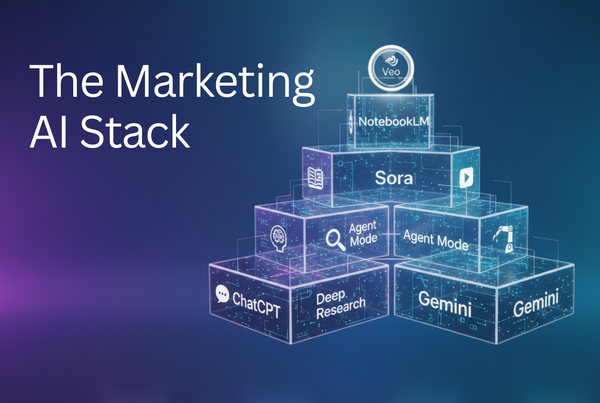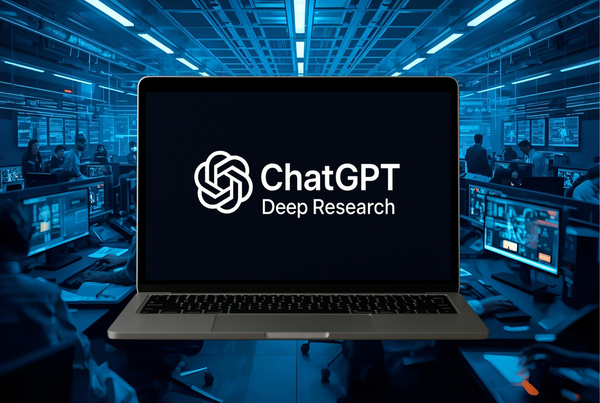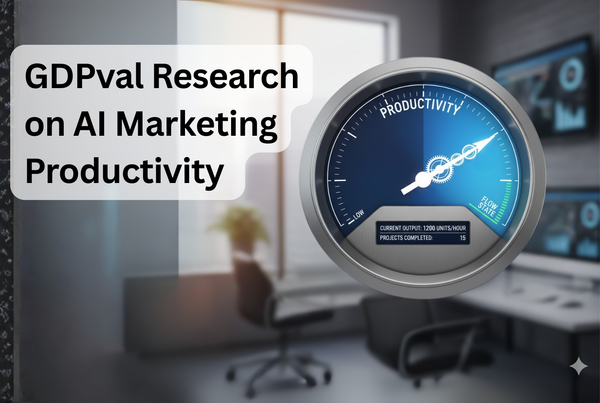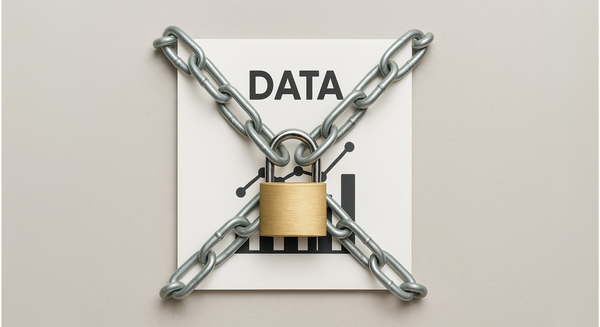Scaling Yourself: How Business Leaders Are Using AI as Their Co-CEO / Co-CMO
Two excellent examples of business leaders using AI as as a co-CEO.

For years, executives have sought ways to “scale themselves” — to multiply their judgment, foresight, and creativity across larger organizations without adding more hours to the day. Traditionally, this meant delegation to trusted lieutenants or building processes to extend influence. Today, a new tool is emerging for leaders who want to think and act at scale: AI agents functioning as executive partners.
Forward-looking leaders are no longer treating AI as just a productivity app. Instead, they’re building “Co-CEOs” and “Co-CMOs” — systems that act as thought partners, operational orchestrators, and even challengers to their assumptions. Two recent examples illustrate how this model is being applied right now.
The CEO’s Office as an AI Innovation Lab
Jim O’Leary, CEO (North America) and Global President at Weber Shandwick, didn’t just dabble in AI adoption. He made his office the testing ground. In a profile by Fast Company, O’Leary described how he deliberately turned his executive suite into a six-month AI innovation lab, with a handpicked team that included his chief of staff, executive assistant, an innovation lead, and a technologist (Fast Company).
Rather than experimenting aimlessly, the team defined a set of concrete use-cases that mirrored O’Leary’s daily leadership pain points. They built:
- Secure meeting summaries so the CEO could spend less time sifting through transcripts and more time acting on insights.
- A research and news engine that filtered the constant flood of external information into prioritized, actionable intelligence.
- An internal knowledge repository — essentially a searchable memory of the firm’s presentations, memos, and press releases.
- AI agents that proposed and coordinated projects, turning vague opportunities into structured initiatives.
What makes this more than a tech experiment is how it changed O’Leary’s workflow. Information that once came piecemeal now arrives synthesized, prioritized, and contextualized. His team still reviews outputs, but he notes that the system’s accuracy and quality continue to improve.
One tangible example: when O’Leary needs to send an all-hands email, his AI “writing agent” drafts the first version. It doesn’t start from scratch; it pulls from meeting notes, prior memos, and curated articles, then adapts the tone to match O’Leary’s voice. Instead of spending hours drafting, he now edits and approves a polished message in minutes.
The time savings are real. O’Leary estimates he has reclaimed 1–2 hours per day, time he reinvests into high-value activities like “blue-sky” strategy and leadership coaching. And the benefits extend beyond his office. Weber Shandwick has launched Halo, a platform that lets employees use similar AI agents to generate client-facing proposals and press releases, all trained on the firm’s proprietary IP.
The lesson here is that executives can start by treating their own office as a laboratory: experiment with AI in leadership workflows first, then expand to the organization once value is proven.
Building a Personal Co-CEO
While O’Leary focused on institutionalizing AI at the organizational level, Paul Roetzer, founder of the Marketing AI Institute, has taken a more personal approach. He built what he calls his “Co-CEO” — an AI agent designed not just for tactical tasks but as a broad strategic partner (Marketing AI Institute).
For Roetzer, the Co-CEO is part advisor, part sparring partner, and part execution engine. He relies on it across domains — marketing, sales, HR, finance, and even legal — in ways that compress timelines and sharpen decision-making.
Consider strategic planning. Faced with the challenge of scaling his content operations, Roetzer could have spent weeks conducting research, drafting frameworks, and breaking down tasks. Instead, he framed the challenge for his Co-CEO. Within minutes, the AI produced a structured, 2,000-word plan: task lists, persona prioritization, and go-to-market strategies. What would have been a month-long project became a working draft ready to refine in a single afternoon.
But the Co-CEO is not just a planning tool; it’s also a thinking partner. Roetzer engages it in dialogue during evenings or quiet moments, bouncing ideas and asking it to stress-test his assumptions. If he’s weighing a budget reallocation, the agent can model risks and trade-offs based on the company’s internal metrics. If he has a bold hypothesis, he asks the Co-CEO to play devil’s advocate, forcing him to see blind spots he might otherwise miss.
The system also executes. It drafts proposals that take into account marketing, sales, and operational constraints; it models “what-if” scenarios to anticipate downstream effects; and it identifies which internal processes are most ripe for AI augmentation. In short, it doesn’t just advise — it starts the work.
Perhaps most intriguing is Roetzer’s plan to scale this Co-CEO to his leadership team. By giving them access, they don’t just benefit from its outputs — they also see how the AI “thinks” through issues. This makes the Co-CEO a kind of teaching tool, helping others adopt his strategic lens and ensuring consistency across decisions.
Build Your Own Co-CEO / Co-CMO
You don't need to start this from scratch. Paul Roetzer published the full prompt template he used for his Co-CEO agent here. Its here for you to customize to your needs.
While you're checking this out, sign up for some of their educational content and events. It's the best you guidance you can find.





